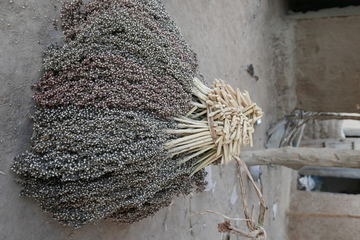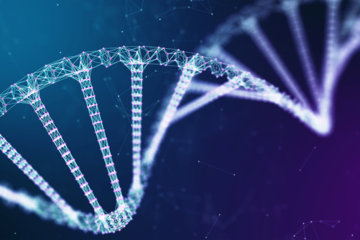Browse
Culture And Society
Data Tag Implementation
This program is an online continuous course with no specific start or end date.
Creating a Culture of Collaboration and Interprofessional Teaming, is an online self-paced course offering. This offering is made possible through the support of Venturit internal WIzdn team.
Read more

By: Hansa Hraos
Due Date: Aug, 27, 2022
Culture and society
Leave a comment

Global Leadership Summit
Global Leadership Summit

By: Anne miller New vijayalaxmi sant...
Due Date: Jul, 15, 2022
Culture and society
+1
Leave a comment
No Preview Available
Virtual Conference: Religion and Democracy on the African Continent
Virtual Conference: Religion and Democracy on the African Continent: Colonial Legacies and Postcolonial Possibilities
“A broad rethinking of political issues becomes possible when Western ideals and practices are examined from the vantage point of Africa.”—Pankaj Mishra, New York Review of Books
Join us Saturday, May 7–Sunday, May 8, for a virtual conference, featuring scholars of Africana Studies, Religious Studies, Anthropology, History, Sociology, Law, and Politics, who will share their expertise on religion and democracy on the African continent. The event will feature a keynote address by Mahmood Mamdani, the Herbert Lehman Professor of Government at Columbia University and author of the book, Neither Settler Nor Native: The Making and Unmaking of Permanent Minorities, (Harvard University Press, 2020). The conference presentations will result in the publication of an edited volume to be made freely available next year.
Registration
The conference will be hosted on Zoom; attendees must register separately for each session. Click on the linked session titles below to register and to learn more about the sessions and speakers.
All sessions will be recorded and made available on the Religion, Race & Democracy Lab’s Vimeo channel.
Schedule of Events
Saturday, May 7: Looking Back
9–11 AM EST
Historical Formations of Religion and Democracy
11:30 AM–1:30 PM EST
African Religious Movements & Democracies
2–4 PM EST
Keynote Lecture: Mahmood Mamdani, Neither Settler Nor Native: The Making and Unmaking of Permanent Minorities
Sunday, May 8: Looking Forward
10 am–12 PM EST
Contemporary Conflicts, the State, and Religion in Africa
1–4 pm EST
New Theories and the Future of Religion and Democracy in Africa (followed by Closing Remarks)
Co-sponsored by the University of Virginia Democracy Initiative's Religion, Race & Democracy Lab, the Page-Barbour Funds, the Institute of the Humanities & Global Culture, the Carter G. Woodson Institute, and the Virginia Center for the Study of Religion.
Read more

By: Edwin Castel
Due Date: May, 26, 2022
Culture and society
+1
Leave a comment
Data science
Data science is an interdisciplinary field that uses scientific methods, processes, algorithms and systems to extract knowledge and insights from noisy, structured and unstructured data, and apply knowledge and actionable insights from data across a broad range of application domains. Data science is related to data mining, machine learning and big data.
Read more

By: rupali
Due Date: Dec, 17, 2021
Agri-food systems
+5
Leave a comment

Atomic model
Most matter consists of an agglomeration of molecules, which can be separated relatively easily. Molecules, in turn, are composed of atoms joined by chemical bonds that are more difficult to break. Each individual atom consists of smaller particles—namely, electrons and nuclei. These particles are electrically charged, and the electric forces on the charge are responsible for holding the atom together. Attempts to separate these smaller constituent particles require ever-increasing amounts of energy and result in the creation of new subatomic particles, many of which are charged.
As noted in the introduction to this article, an atom consists largely of empty space. The nucleus is the positively charged centre of an atom and contains most of its mass. It is composed of protons, which have a positive charge, and neutrons, which have no charge. Protons, neutrons, and the electrons surrounding them are long-lived particles present in all ordinary, naturally occurring atoms. Other subatomic particles may be found in association with these three types of particles. They can be created only with the addition of enormous amounts of energy, however, and are very short-lived.
Read more

By: rupali
Due Date: Jul, 30, 2021
Culture and society
+1
Leave a comment
No Preview Available
Myxomatosis
Myxomatosis, formally infectious myxomatosis, or myxomatosis cuniculi, a highly fatal infectious viral disease of rabbits. It is characterized by fever, swelling of the mucous membranes, and the presence of nodular skin tumours. The disease exists naturally in populations of certain South American rabbits of the genus Sylvilagus and has been introduced into western Europe and Australia as a means of rabbit population control.
Read more

By: rupali
Due Date: Nov, 20, 2021
Culture and society
+1
Leave a comment

Leaf IN botany
Leaf, in botany, any usually flattened green outgrowth from the stem of a vascular plant. As the primary sites of photosynthesis, leaves manufacture food for plants, which in turn ultimately nourish and sustain all land animals. Botanically, leaves are an integral part of the stem system. They are attached by a continuous vascular system to the rest of the plant so that free exchange of nutrients, water, and end products of photosynthesis (oxygen and carbohydrates in particular) can be carried to its various parts. Leaves are initiated in the apical bud (growing tip of a stem) along with the tissues of the stem itself. Certain organs that are superficially very different from the usual green leaf are formed in the same manner and are actually modified leaves; among these are the sharp spines of cacti, the needles of pines and other conifers, and the scales of an asparagus stalk or a lily bulb.
Read more

By: rupali
Due Date: Jul, 15, 2021
Culture and society
+1
Leave a comment

An Introduction to "Teaching Multilingual Learners: An Introduction to Translingual Pedagogy"
Sharing Strategies Think, Pair, Share/Square Share/Group Share: Using thisapproach, students work with peer partners to discuss the lesson, check each other’swork, and share strategies.Partner Reading Student partners take turns reading orally and listening to each other. Peer partners can also be helpful with discussing answers to comprehension questions, spelling, proofreading, and solving math problems.
Self-Correction Opportunities Students use calculators or a key provided by the teacher to check their answers.Learning Games Students play board games that reinforce skills such as sight vocabulary, phonics, grammar rules, and basic math facts.
Read more

By: Hasha
Due Date: Aug, 21, 2021
Culture and society
+2
Leave a comment

Data Tag Implementation
Clean Out Dates: Periodically ask the student to sort through and clean out his orher desk, book bag, and other special places where written assignments are stored.Extra Books: Provide the student with an extra set of books or electronicversions of books for use at home. This eliminates the student having toremember to bring books back and forth.Use of Calendars: Teach the student to use a calendar for schedulingassignments. Tape a schedule of planned daily activities to the student’s desk tohelp with time management and transitions.Checklist of Homework Supplies: Give the student a checklist that identifiescategories of items needed for homework assignments. The checklist can betaped to the inside of the student’s locker or desk.
Read more

By: Jane Joew
Due Date: Sep, 18, 2021
Culture and society
+1
Leave a comment
No Preview Available
Agri and food Scholar
Primer text from the College of William & Mary.https://education.wm.edu/centers/ttac/documents/packets/adhd.pdf
Many students with ADHD have significant difficulties with organization.
They are more likely to respond positively when teachers establish class routines and set procedures and maintain a well-organized learning environment.
Clear rules and advanced planning are keys to success for teachers of students with ADHD.
The following organizational supports are particularly useful. Students should be taught to use these tools through teacher modeling and guided practice with feedback before being expected to use them more independently.
Assignment Notebook: Provide the student with an assignment notebook to helporganize homework and seatwork.Color-Coded Folders: Provide the student with color-coded folders to helporganize assignments for different academic subjects.Homework Partners: Assign the student a partner who can help record
Read more

By: Anne miller New vijayalaxmi sant...
Due Date: Aug, 20, 2021
Culture and society
+2
Leave a comment

Venture capital
Primer text from The College of William & MaryADHD is one of the most commonly diagnosed conditions of children (Centers for DiseaseControl and Prevention, 2015).
In a 2016 Centers for Disease Control and Prevention study, scientists found that 6.1 million children aged 2-17 years living in the U.S. had been diagnosed with attention-deficit/hyperactivity disorder (ADHD), which is similar to previous estimates.
Ages 2-5: Approximately 388,000 children
Ages 6-11: Approximately 2.4 million children
Ages 12-17: Approximately 3.3 million children
The diagnostic term attention deficit/hyperactivity disorder (ADHD) refers to individuals who display patterns of inattention, impulsivity, and overactive behavior that interfere with daily functioning (American Psychiatric Association [APA], 2013).
The Diagnostic and Statistical Manual (DSM) V (APA, 2013) criteria for diagnosing ADHD listthree types of ADHD and the accompanying characteristics.
Predominantly inattentive type.The student may:o submit inaccurate or incomplete work,o have difficulty attending to conversations, activities, or tasks,o be easily distracted,o have difficulty following directions,o frequently lose materials, and/oro have difficulty organizing tasks and materials.
Read more

By: Anne miller New vijayalaxmi sant...
Due Date: Aug, 7, 2021
Culture and society
+1
Leave a comment

How Sociologists Define Culture
Culture is one of the most important concepts within sociology because sociologists recognize that it plays a crucial role in our social lives. It is important for shaping social relationships, maintaining and challenging social order, determining how we make sense of the world and our place in it, and in shaping our everyday actions and experiences in society. It is composed of both non-material and material things.
In brief, sociologists define the non-material aspects of culture as the values and beliefs, language, communication, and practices that are shared in common by a group of people. Expanding on these categories, culture is made up of our knowledge, common sense, assumptions, and expectations. It is also the rules, norms, laws, and morals that govern society; the words we use as well as how we speak and write them and the symbols we use to express meaning, ideas, and concepts (like traffic signs and emojis, for example). Culture is also what we do and how we behave and perform (for example, theater and dance). It informs and is encapsulated in how we walk, sit, carry our bodies, and interact with others; how we behave depending on the place, time, and "audience;" and how we express identities of race, class, gender, and sexuality, among others. Culture also includes the collective practices we participate in, such as religious ceremonies, the celebration of secular holidays, and attending sporting events.
Read more

By: rupali
Due Date: Jan, 18, 2025
Culture and society
+2

Leave a comment